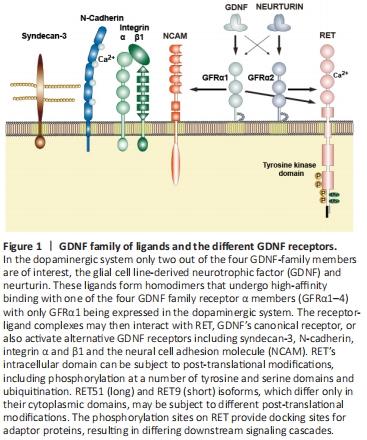神经退行性病
-
Figure 1 | GDNF family of ligands and the different GDNF receptors.

The receptor tyrosine kinase rearranged during transfection (RET) can signal via several pathways to exert vital functions in neurons. The most widely studied ligand for RET is the glial cell line-derived neurotrophic factor (GDNF), which signals through binding the glycosylphosphatidylinositol (GPI)-linked GDNF family receptor alpha 1 (GFRα1) and to some extent also GDNF family receptor alpha 2 (GFRα2), which in turn binds RET to activate its intracellular tyrosine kinase activity (Figure 1). RET is responsible for activating downstream signaling cascades which can promote neurite growth, cell differentiation, and survival, as well as synaptic plasticity (Enterria-Morales et al., 2020). Whilst GDNF-RET signaling has been widely studied for decades, as well as being the target of several clinical trials attempting to treat Parkinson’s disease (PD), the full extent of GDNF-RET’s physiological functions in the midbrain dopaminergic system, which is impaired in PD, remains unclear.